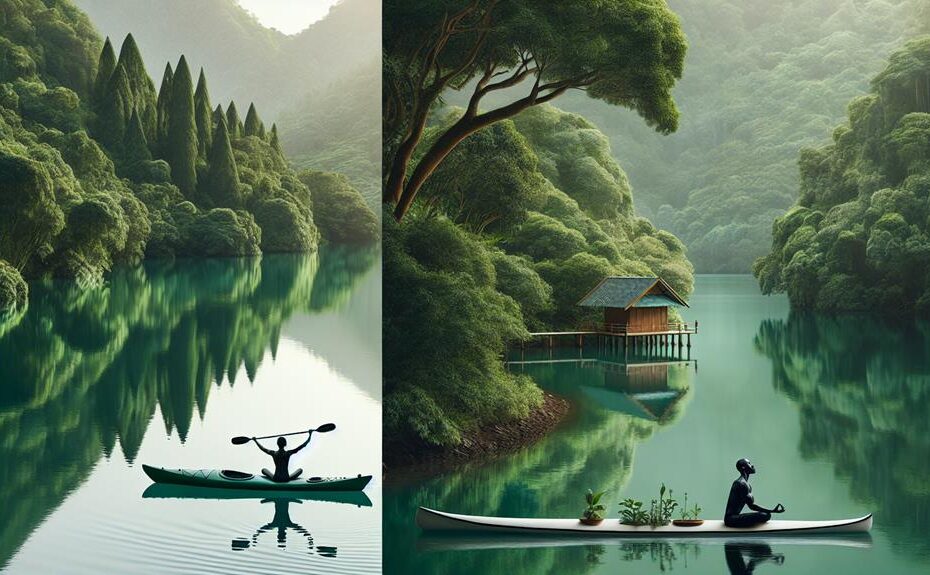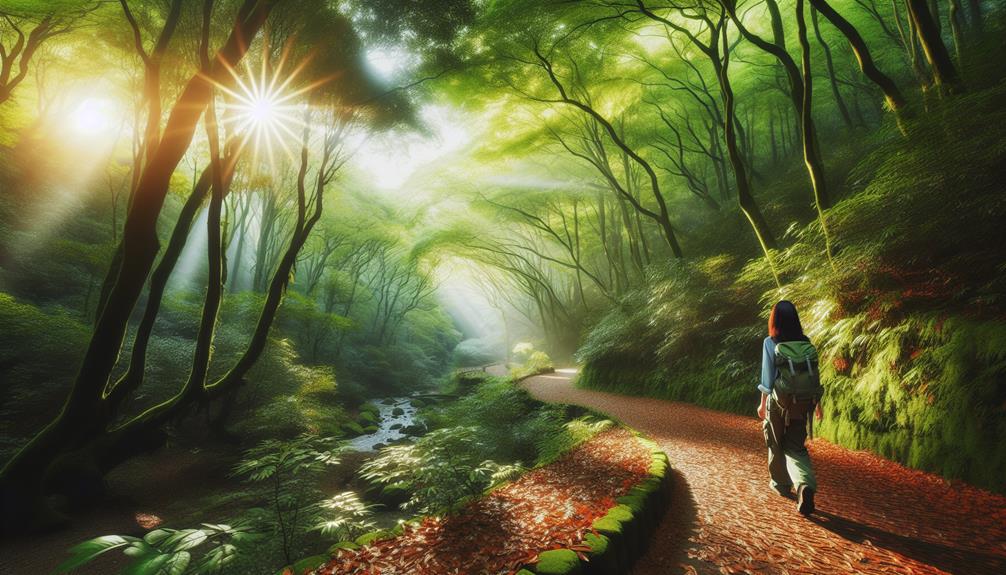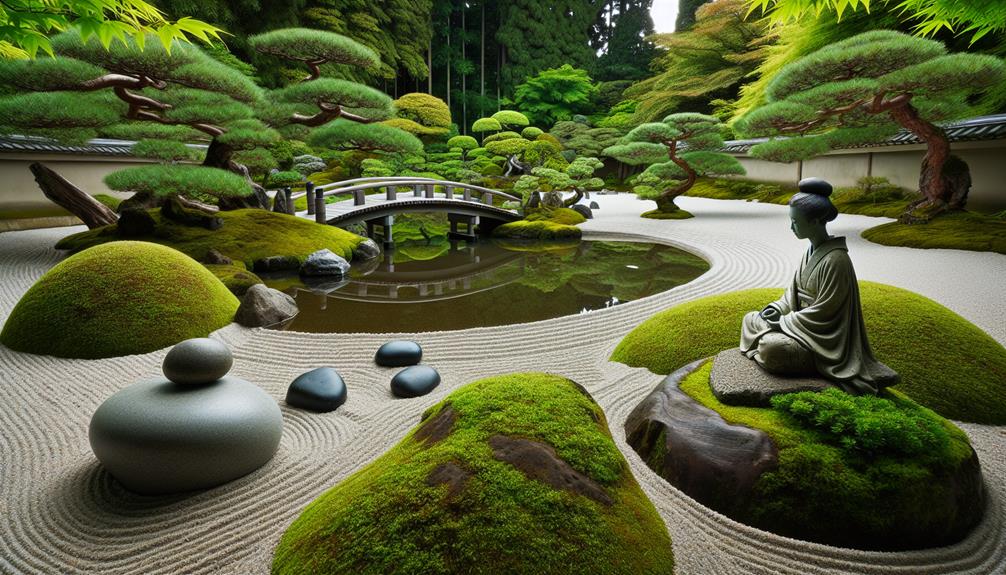Have you ever felt the urge to escape the hustle and bustle of daily life and immerse yourself in the serene embrace of nature’s waters? The gentle rhythm of paddling, the soothing sounds of water lapping against your craft, the mesmerizing play of sunlight on the surface – all these elements come together to create a mindful water adventure like no other. But there’s more to these experiences than meets the eye. Discover how kayaking and canoeing can not only transport you physically but also mentally as you navigate through the tranquil landscape, fostering a deeper connection with yourself and the world around you.
Key Takeaways
- Practice mindfulness techniques on the water for enhanced sensory awareness and deep appreciation of the journey.
- Explore serene lakes, dynamic rivers, wetlands, and coastal waters for diverse challenges and rewards.
- Prioritize safety with essential gear, route planning, and awareness of surroundings for a mindful water adventure.
- Engage in meditation, breathing exercises, and observation of water reflections to foster calmness and relaxation.
- Join community or group paddling opportunities to build connections, improve coordination, and create lasting memories.
Benefits of Kayaking and Canoeing
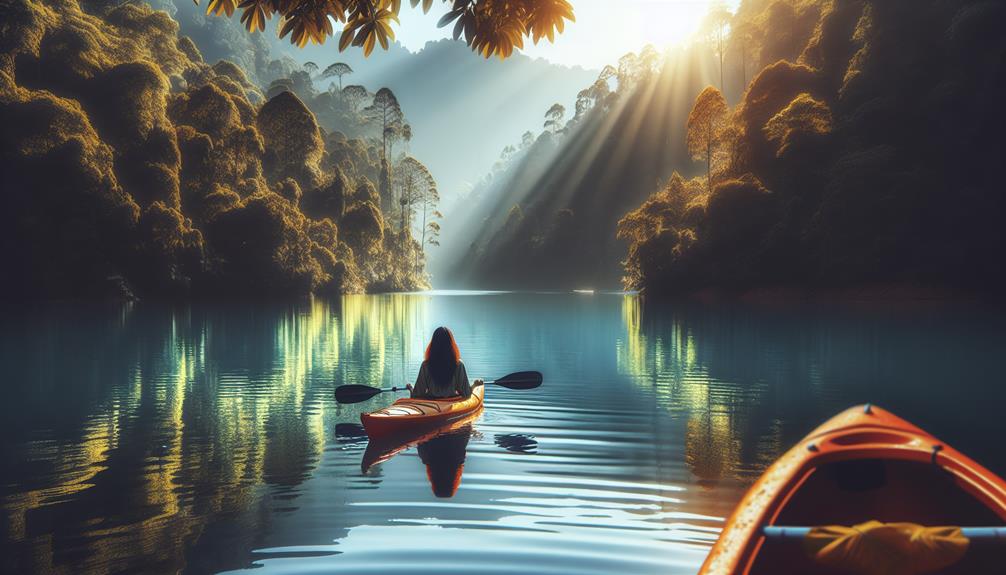
Embarking on kayaking or canoeing adventures can greatly enhance your physical fitness and mental well-being. The rhythmic paddling not only provides an excellent physical workout, engaging your core, arms, and back muscles, but also offers mental health benefits.
As you glide through the serene waters, surrounded by nature’s beauty, you can experience a profound sense of calm and relaxation. The peacefulness of the water and the gentle sounds of nature can help alleviate stress and anxiety, providing a much-needed escape from the hustle and bustle of daily life.
Moreover, the connection with nature while kayaking or canoeing can be truly transformative. Being out on the water allows you to immerse yourself in the natural world, fostering a sense of tranquility and mindfulness. The sights and sounds of the outdoors can help you feel more grounded and connected, promoting a sense of well-being and inner peace.
Choosing the Right Equipment
When gearing up for your kayaking or canoeing adventure, selecting the right equipment is crucial. From choosing essential gear like life jackets and helmets to comparing different paddle types, having the proper equipment ensures a safe and enjoyable experience on the water.
Let’s explore the ins and outs of essential gear selection and the various paddle types available to help you make informed decisions for your next paddling excursion.
Essential Gear Selection
Selecting the appropriate gear is crucial for an enjoyable and safe kayaking or canoeing experience. Before hitting the water, ensure your gear is well-maintained to avoid any unexpected issues.
It’s essential to have the right accessories such as a life jacket, whistle, and a first aid kit for safety. Additionally, investing in a dry bag to keep your belongings safe from water is a smart choice.
When it comes to paddling techniques, skill development is key. Practice your strokes, learn how to brace and capsize safely, and understand how to navigate different water conditions. Developing these skills won’t only enhance your experience but also keep you safe on the water.
Remember to dress appropriately for the weather and water temperature, as being prepared is crucial for a successful outing.
Paddle Types Comparison
To ensure a successful kayaking or canoeing adventure, understanding the differences between various paddle types is essential for choosing the right equipment. When it comes to paddle styles, there are mainly two types: symmetrical and asymmetrical. Symmetrical paddles have blades that are the same shape and size on both sides, making them versatile for both kayaking and canoeing.
On the other hand, asymmetrical paddles have blades of different shapes and sizes, offering more efficiency and power with each stroke.
In the canoe vs kayak debate, paddles play a crucial role. Canoe paddles tend to be single-bladed and are designed for a more leisurely pace, making them ideal for calm waters and longer trips.
On the contrary, kayak paddles have two blades, allowing for easier maneuverability and faster speeds, perfect for navigating through rougher waters and tight spaces. Both types have their pros and cons, so it’s essential to consider your paddling style and the type of water you’ll be exploring before making a choice.
Essential Safety Tips
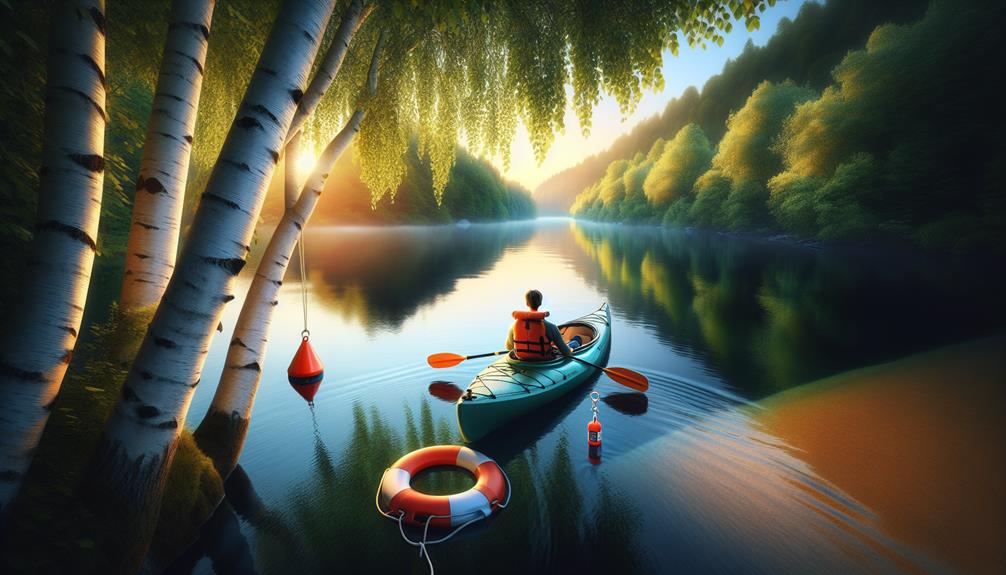
For a safe and enjoyable kayaking or canoeing experience, prioritize familiarizing yourself with essential safety tips. Being prepared for emergencies is crucial. Make sure to bring a first aid kit, a whistle for signaling, and a fully charged phone in a waterproof case.
In case of an emergency, knowing proper emergency response procedures can make all the difference. Familiarize yourself with basic first aid techniques and how to call for help in different situations.
Water rescue is another critical aspect of staying safe on the water. Always wear a properly fitted life jacket and ensure it’s fastened securely. Practice self-rescue techniques in calm waters before venturing into more challenging environments.
Knowing how to help others in distress is equally important. Learn how to assist someone who’s fallen overboard or is struggling in the water without putting yourself in danger.
Exploring Different Water Environments
Explore various water environments to enhance your kayaking or canoeing experience, from serene lakes to rushing rivers and coastal waters. Each setting offers unique challenges and rewards for paddlers seeking adventure.
Start by venturing into serene lakes, where the tranquil waters mirror the surrounding landscapes, creating a calming and picturesque atmosphere. Lakes provide an excellent opportunity for beginners to practice their paddling skills in a peaceful environment.
As you gain confidence, consider embarking on river adventures, navigating through winding waterways and experiencing the thrill of faster currents. Rivers offer a dynamic environment that challenges your maneuvering abilities and provides a sense of exploration as you discover hidden corners and diverse wildlife along the banks.
For a more immersive experience, try wetland exploration, where you can paddle through intricate ecosystems teeming with biodiversity. Coastal waters present a different kind of adventure, with the vast expanse of the ocean inviting paddlers to explore its waves and tides. Ocean exploration offers a chance to encounter marine life and witness breathtaking seascapes, adding a touch of excitement to your water adventures.
Mindful Techniques on the Water
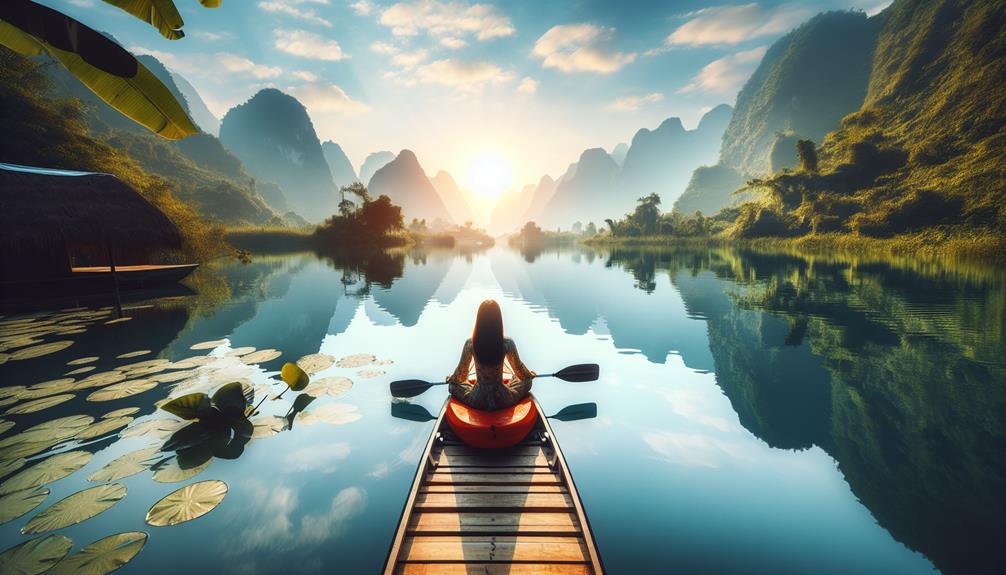
Enhance your kayaking or canoeing experience by practicing mindfulness techniques while on the water. Engaging in meditation techniques and breathing exercises can help you connect with the present moment and fully immerse yourself in the beauty of your surroundings. By incorporating mindful water reflections and enhancing your sensory awareness, you can deepen your appreciation for the journey.
Here is a table to guide you through some mindfulness techniques you can practice while on the water:
| Mindful Techniques | Description | Benefits |
|---|---|---|
| Meditation Techniques | Focus on your breath and surroundings to center your mind | Enhances mental clarity |
| Breathing Exercises | Practice deep, rhythmic breathing to promote relaxation | Reduces stress and anxiety |
| Mindful Water Reflections | Observe the water’s movement and reflections for a calming effect | Increases sense of peace and serenity |
| Sensory Awareness | Engage all your senses to fully experience the moment | Heightens connection to nature |
Wildlife Encounters and Nature Appreciation
Immerse yourself in the natural world as you navigate the waters, opening yourself to potential wildlife encounters and deepening your appreciation for the beauty of nature.
As you paddle along serene waterways, keep an eye out for various bird species gracefully gliding above the water or perched in nearby trees, perfect for some impromptu bird watching.
The peaceful surroundings also provide an ideal backdrop for landscape photography, capturing the stunning scenery that unfolds before you.
Bird Watching: Spotting different bird species in their natural habitat can be a rewarding experience, enhancing your connection to the environment.
Landscape Photography: Use your time on the water to capture breathtaking views and unique perspectives that only kayaking or canoeing can offer.
Forest Bathing and Nature Journaling: Take moments to immerse yourself in the calming embrace of nature, engaging in forest bathing or documenting your thoughts and observations in a nature journal for a more mindful experience.
Engaging with wildlife and appreciating the wonders of nature while on your water adventure can cultivate a profound sense of gratitude and connection to the world around you.
Planning Your Water Adventure
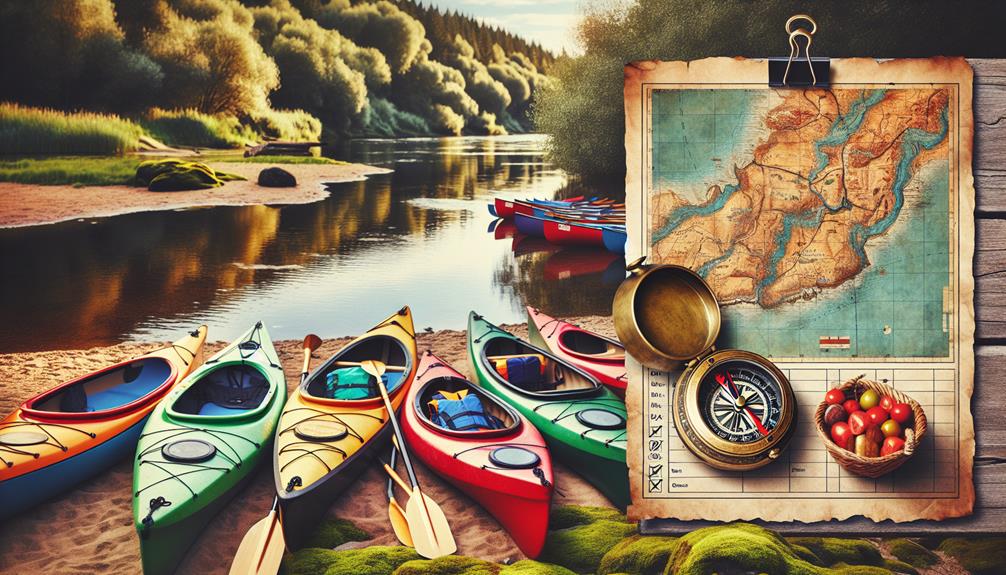
Before embarking on your water adventure, make sure you have the essential gear like a life jacket, paddle, and waterproof bags.
Plan your route carefully, considering factors like water currents, weather conditions, and any potential obstacles along the way.
Remember to prioritize safety by checking the weather forecast, informing someone of your plans, and being mindful of your surroundings at all times.
Gear Essentials for Planning
When planning your water adventure, ensure you have the essential gear to make the most of your kayaking or canoeing experience. Having the right equipment not only enhances your safety but also adds to the enjoyment of your trip.
Here are some key gear essentials for planning:
- PFD (Personal Flotation Device): Safety should always come first when venturing out on the water. A well-fitted PFD can be a lifesaver in case of an emergency, so make sure each person has one that fits properly.
- Paddle: A sturdy and appropriately sized paddle is crucial for maneuvering your kayak or canoe efficiently. Consider the material, weight, and blade shape when selecting the right paddle for your adventure.
- Waterproof Storage: Keep your belongings dry and secure by investing in waterproof bags or containers. These are essential for storing items like snacks, electronics, and extra clothing during your trip.
Route Mapping Tips
To make the most of your water adventure, begin by carefully planning your route with these essential mapping tips. Before setting off, hone your navigation skills to ensure a smooth journey. Utilize GPS tracking to mark key points along your route and to track your progress. Identify landmarks such as distinct trees, rock formations, or buildings that can serve as reference points, aiding in your navigation.
When mapping out your route, consider incorporating scenic stops where you can take in the beauty of your surroundings. Plan to paddle past breathtaking vistas, serene coves, or interesting wildlife habitats. These stops not only provide a chance to rest and rejuvenate but also offer opportunities for exploration and appreciation of nature’s wonders.
Safety Precautions to Consider
Ensure your water adventure is both enjoyable and safe by implementing essential safety precautions as you plan your excursion. Before embarking on your kayaking or canoeing journey, take the time to conduct a thorough risk assessment to identify potential hazards and ensure you’re well-prepared for any unexpected situations.
Consider the following safety measures:
- Emergency Procedures: Familiarize yourself with emergency protocols and ensure you have the necessary equipment such as a whistle, first aid kit, and communication devices in case of emergencies.
- Weather Conditions: Stay informed about the weather forecast and be prepared to adjust your plans accordingly to avoid dangerous conditions like strong winds or thunderstorms.
- Water Hazards: Be aware of potential water hazards such as rocks, strong currents, or submerged obstacles that could pose a risk to your safety. Always wear a personal flotation device and stay alert while on the water.
Community and Group Paddling Opportunities
Discover exciting opportunities to paddle with a community or group, enhancing your kayaking and canoeing experiences through shared adventures on the water. Engaging in group paddling not only adds a social aspect to your water activities but also brings about a sense of camaraderie and teamwork. Here are some benefits of participating in community and group paddling opportunities:
| Benefits of Group Paddling | Description | Example |
|---|---|---|
| Group Dynamics | Experience improved communication and coordination skills as you navigate the water together. | Learning to synchronize paddling strokes with your group to move efficiently. |
| Team Building | Strengthen bonds with fellow paddlers through collaborative efforts on the water. | Working together to overcome obstacles like strong currents or windy conditions. |
| Social Connections | Form lasting friendships and connections with like-minded individuals who share your passion for paddling. | Sharing stories and laughter during a post-paddling picnic by the shore. |
Community engagement and shared experiences on the water can create lasting memories and foster a sense of belonging within the paddling community. So, grab your paddle, join a group, and explore the beauty of nature together!
Frequently Asked Questions
Can Kayaking or Canoeing Help Improve My Mental Health?
Absolutely! Kayaking or canoeing can improve mental health by promoting mental clarity, stress relief, emotional well-being, and serving as a mindfulness practice. Engaging with nature on the water helps calm your mind and uplift your spirits.
Should I Bring a Waterproof Phone Case on My Trip?
You should definitely bring a waterproof phone case on your trip. It’s crucial for phone protection during water activities and ensures phone safety during outdoor adventures. Don’t risk water damage – keep your phone safe!
What Is the Best Way to Pack Food for a Day Trip?
When prepping for a day trip, ensure proper food storage for freshness. Pack plenty of water for hydration. Don’t forget picnic essentials for a satisfying meal. Meal planning helps avoid hunger on your adventure.
How Do I Avoid Getting Sunburned While on the Water?
To avoid sunburn while on the water, remember this: 90% of skin aging is due to sun exposure. Apply sunscreen generously, wear protective clothing, utilize shade options like hats or umbrellas, and practice sun protection techniques for a worry-free adventure.
Are There Any Specific Rules for Interacting With Wildlife?
When out on the water, remember wildlife etiquette. Keep a safe distance, observe quietly, and avoid feeding or touching animals. Follow safety precautions by staying aware of your surroundings and respecting the natural habitat.
Conclusion
As you glide through the serene waters, your mind finds peace amidst the chaos of everyday life.
The gentle strokes of your paddle create a soothing rhythm, harmonizing with the natural world around you.
Embrace the tranquility of the moment, feeling both small and significant in this vast expanse of water.
Let the stillness of the water wash away your worries, leaving you refreshed and renewed, ready to face whatever challenges may come your way.
